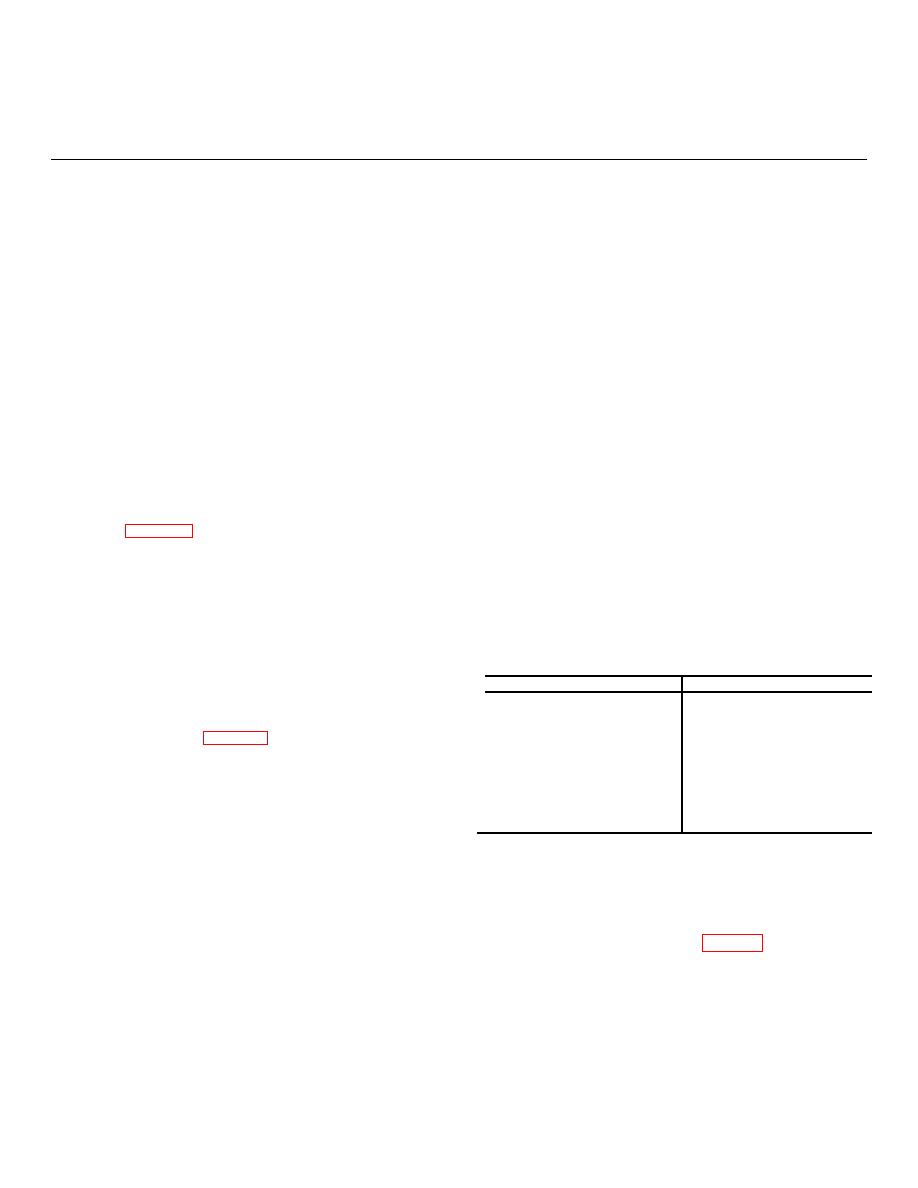 |
|||
|
|
|||
|
Page Title:
Chapter 4. ORGANIZATIONAL MAINTENANCE INSTRUCTIONS |
|
||
| ||||||||||
|
|  TM 11-5825-270-23
CHAPTER 4
ORGANIZATIONAL MAINTENANCE INSTRUCTIONS
Section I. GENERAL
d. The monitor receiver does not require any
4-1. Introduction
lubrication, scheduled or periodic.
e. The PMCS for the monitor receiver are provided
a. Organizational maintenance of the monitor
in the Operator's Manual (TM 11-5825-270-10);
receiver shall consist of removal and replacement of
additional PMCS are not applicable.
units, assembles, subassemblies, and certain chassis-
mounted parts. Procedures are included in this chapter
4-2. Voltage Measurements
to make sure that the repair has been successfully
completed.
Overall voltage checks are not applicable to
NOTE
maintenance of the monitor receiver. Pertinent readings
All organizational maintenance tasks
are given in the applicable procedures.
shall be carried out at the monitor
4-3. Resistance Measurements
receiver site.
b. Organizational maintenance personnel are
Overall resistance maintenance checks are
not
applicable to maintenance of the monitor receiver.
required to make the inspections and tests of the monitor
receive on a semiannual basis. These inspections and
4-4. Waveform Measurements
tests are the same as the maintenance turn on
procedure (table 4-2).
c. Repainting and/or refinishing of the monitor
Pertinent waveforms are given in the figures and are
referenced by the applicable procedures.
receiver is not authorized at the organizational
maintenance level.
Section II. TOOLS AND TEST EQUIPMENT
Table 4-1. Special Tools and Test Equipment
4-5. General
Item
Common Name
Special tools, test equipment and other support
Electronic Counter Mainframe
Frequency counter
equipment and accessories issued with or prescribed for
TD-1209/U
use by organizational and direct support maintenance
Electronic Counter Module
Plug-in unit
personnel are listed in table 4-1.
TD-1211/U
Multimeter AN/USM-223
Oscilloscope, OS-261
Test Set SG-1128/U
Signal generator
Tool Kit, Electronic Equip-
Toolkit
ment TK-105/G
Section III. TROUBLESHOOTING
4-6. Introduction
probable cause and corrective actions. Note that some
of the corrective actions require direct support
a. This section contains the troubleshooting
maintenance personnel (refer to para 5-4).
b. Troubleshooting tables are used for fault
procedures which can be performed at the
organizational level of maintenance. Troubleshooting
isolation. Follow through the troubleshooting tables in
procedures are designed to locate and correct
the order given in each table. Do not skip steps unless
malfunctions. Each listed malfunction is followed by a
the procedures tell you to. Once a fault has been
list of tests or inspections which will help to determine
cleared, return the monitor receiver to its normal
4-1
|
|
Privacy Statement - Press Release - Copyright Information. - Contact Us |